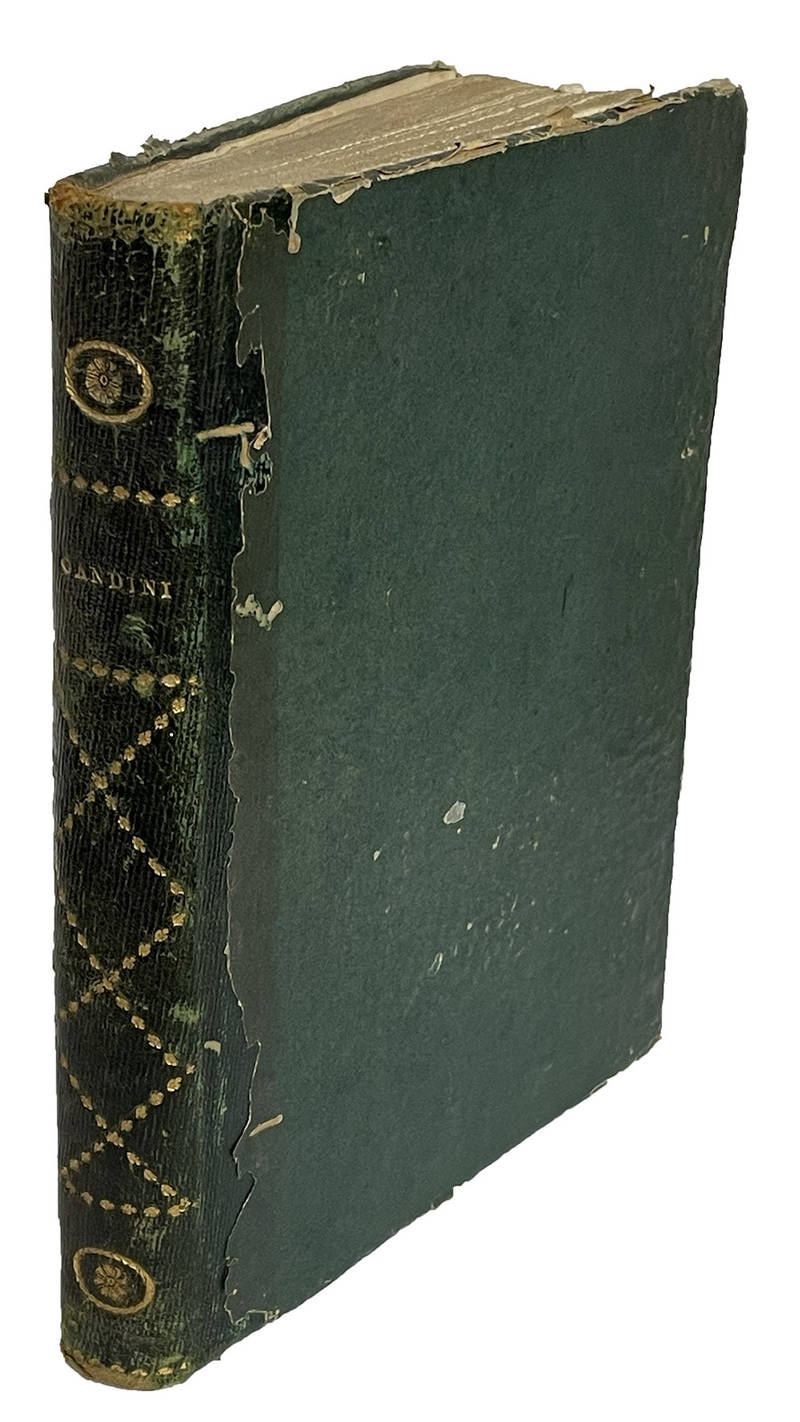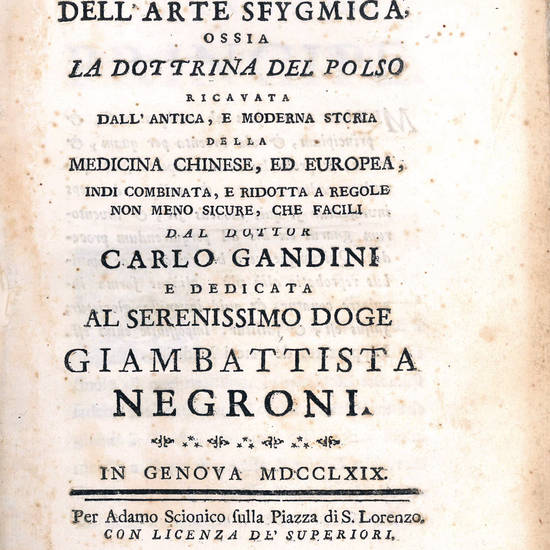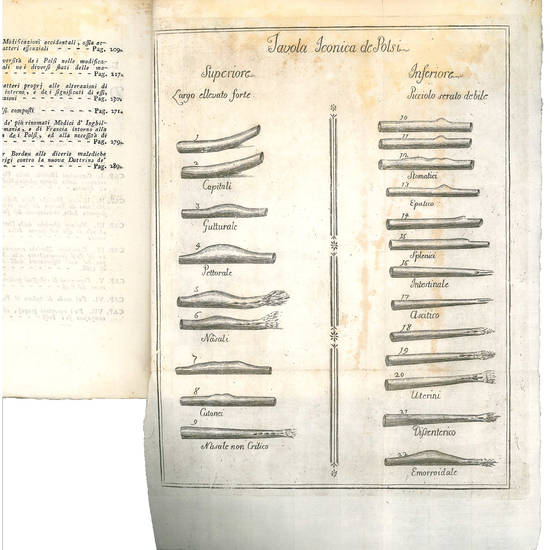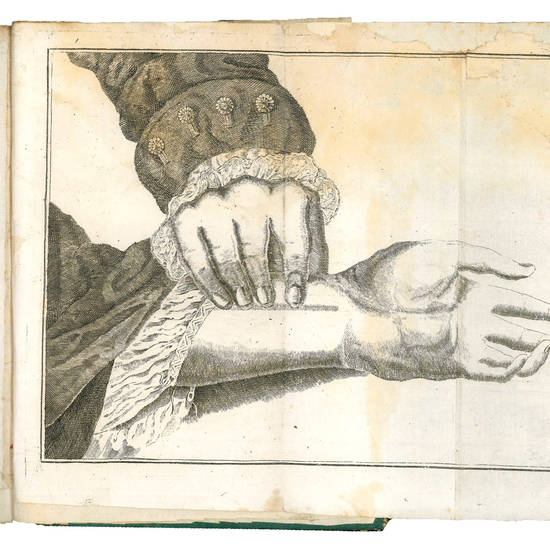Gli elementi dell'arte sfygmica, ossia la dottrina del polso ricavata dall'antica, e moderna storia della medicina chinese, ed europea, indi combinata, e ridotta a regole non meno sicure che facili dal dottor Carlo Gandini e dedicata al serenissimo doge Giambattista Negroni
Autore: GANDINI, Carlo (1705-1788)
Tipografo: Adamo Scionico sulla piazza di S. Lorenzo
Dati tipografici: Genova, 1769
4to (210x154 mm). VII, [1 blank], 296 pp. and [2] engraved folding plates. Green half morocco gilt (worn and rubbed). Marginal stain towards the end of the volume, marginal restoration to the second plate not affecting the engraving, otherwise a good copy.
First edition of this treatise on the art of pulse interpretation. Carlo Gandini was born in Verona in 1705 and studied medicine and philosophy probably at the University of Padua, where G.B. Morgagni and A. Vallisneri were teaching in those years. Having completed his university training, around 1727 Gandini began practicing medicine presumably in Verona. Unsatisfied with the traditional medicine of this time, from 1734 he began a long period of travelling in order to learn new methods from different European medical schools. He visited Germany, Holland, England, where he witnessed the inoculation of smallpox (of which he later became a tenacious advocate upon his return to Italy), Portugal, and Spain, where the physician M. Gutierrez de los Ríos, a follower of F. Solano de Luque, introduced him to the practice of pulse evaluation. The method adopted by Gandini had a highly formative value for the young physicians who could thus observe normal physiological changes and the appearance of pathological states, learning how to discern the signs of disease (cf. C. Farinella, Gandini, Carlo, in: “Dizionario Biografico degli Italiani”, 52, 1999, s.v.).
Italian Union Catalogue, IT\ICCU\TO0E\008496; Blake, 165; Brugnoli, p. 24; Bibliotheca Walleriana, I, p. 157.
[10998]







